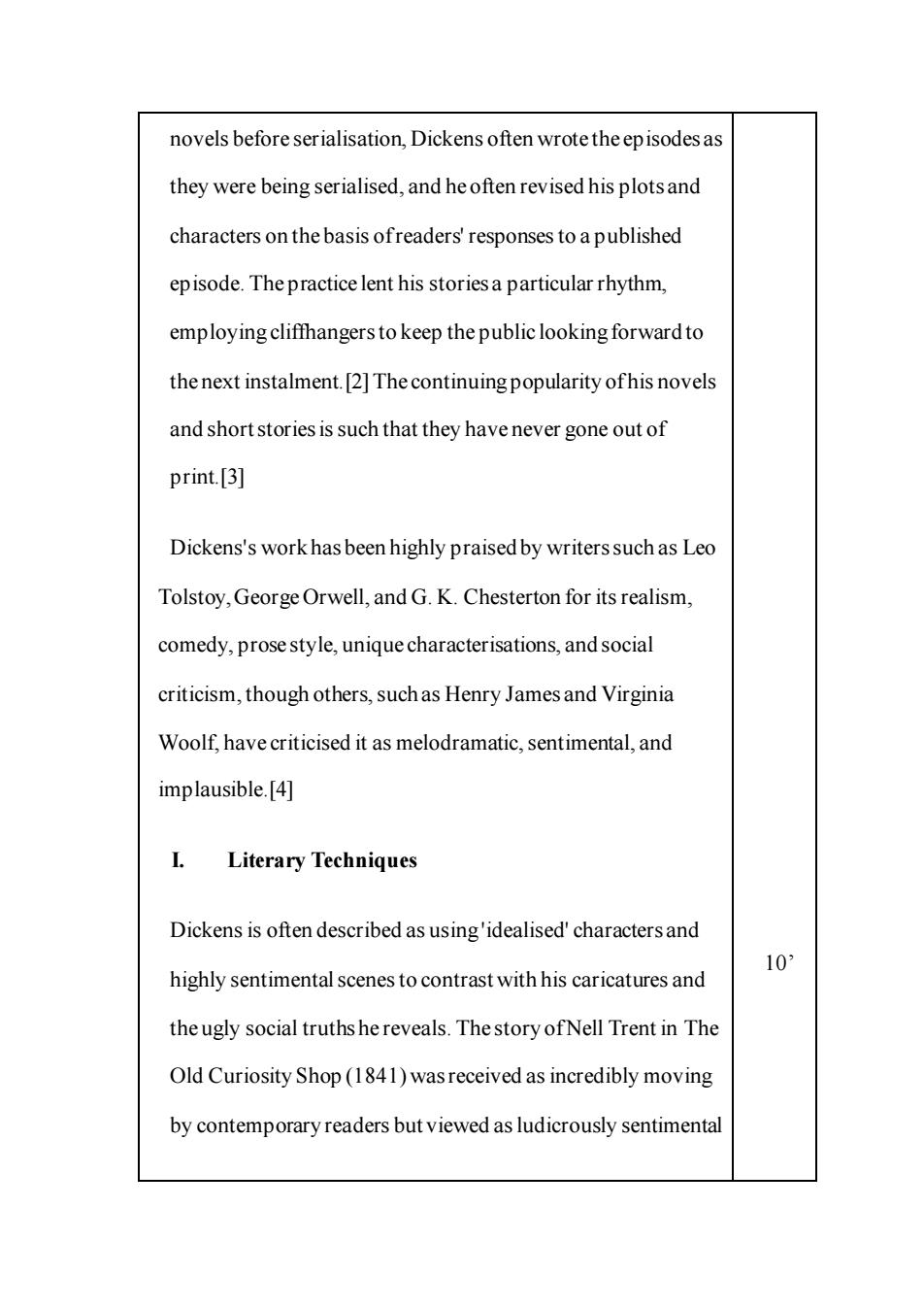正在加载图片...

novels before serialisation,Dickens often wrote the episodes as they were being serialised,and he often revised his plots and characters on the basis ofreaders'responses to a published episode.Thepractice lent his storiesa particular rhythm employing clifthangers to keep the public looking forward to the next instalment.[2]The continuing popularity ofhis novels and short stories is such that they have never gone out of print.[3] Dickens's work has been highly praised by writerssuch as Leo Tolstoy,George Orwell,and G.K.Chesterton for its realism, comedy,prose style,unique characterisations,and social criticism,though others,suchas Henry James and Virginia Woolf,have criticised it as melodramatic,sentimental,and implausible.[4] I Literary Techniques Dickens is often described as using'idealised'characters and 10 highly sentimental scenes to contrast with his caricatures and the ugly social truths he reveals.The story ofNell Trent in The Old Curiosity Shop(1841)wasreceived as incredibly moving by contemporary readers but viewed as ludicrously sentimental novels before serialisation, Dickens often wrote the episodes as they were being serialised, and he often revised his plots and characters on the basis of readers' responses to a published episode. The practice lent his stories a particular rhythm, employing cliffhangersto keep the public looking forward to the next instalment.[2]The continuing popularity of his novels and short stories is such that they have never gone out of print.[3] Dickens's work has been highly praised by writers such as Leo Tolstoy, George Orwell, and G. K. Chesterton for its realism, comedy, prose style, unique characterisations, and social criticism, though others, such as Henry James and Virginia Woolf, have criticised it as melodramatic, sentimental, and implausible.[4] I. Literary Techniques Dickens is often described as using 'idealised' characters and highly sentimental scenes to contrast with his caricatures and the ugly social truths he reveals. The story of Nell Trent in The Old Curiosity Shop (1841) was received as incredibly moving by contemporary readers but viewed as ludicrously sentimental 10’